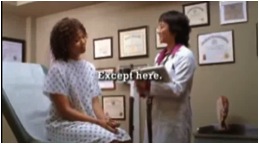by Michael Wong, JD (Executive Director, Physician-Patient Alliance for Health & Safety)
According to the American Dental Association, each year about five million people have ten million wisdom teeth extracted in the United States. Usually administered under a local anesthetic and sometimes under a general anesthetic, teeth extraction is generally considered routine and simple.
However, as the American Society of Anesthesiologists reminds us that although “anesthesia is safer than ever before, every person scheduled for a procedure or surgery must have a serious conversation with their physician anesthesiologist about their anesthesia care delivery plan ahead of time … Even ‘minor procedures’ are not risk-free.”

Why should we be concerned about the effects of the use of anesthesia during even “routine” procedures”?
Be concerned about the effects of #anesthesia during even “routine” procedures” #ptsafety #RIPSyd Click To TweetJay Sengupta, MD (cardiologist, Minneapolis Heart Institute) said that anesthesia can be hard on your body, sometimes exposing unknown heart conditions:
“We see this a lot,” said Sengupta. “The first time that an abnormal heart rhythm is noticed is when they come in for a procedure and they may have been completely asymptomatic up to that point.”
Sengupta said preventing potential problems starts with asking the right questions.
“What type of anesthesia is going to be used, the degree of sedation, the duration of the sedation and the environment where the sedation is going to be done making sure there is enough resources and personnel,” he said.
Can such tragedies be prevented?
The Physician-Patient Alliance for Health & Safety offers four simple points to keep in mind:
Four lessons learned from the death of 17-year-old Sydney Galleger #ptsafety #RIPSyd Click To Tweet1. Even “minor” procedures can have major risks and “hidden harm”
The death of Joan Rivers, who underwent minor elective surgery, was a powerful reminder that there is no such thing as a minor procedure. In commenting on the Sydney Gallagher’s death, Mark Wolff, D.D.S., Ph.D. (professor, New York University College of Dentistry) said, ”We like to think of having wisdom teeth out as a casual occurrence, but it can be an extensive surgery, it’s important to remember that. It is surgery and it should be managed judiciously.”
Even “minor” procedures can have major risks and “hidden harm #ptsafety #RIPSyd Click To Tweet2. Ask questions to fully understand the medical procedure you are to undergo
Physicians must communicate and patients need to fully understand the full nature of the medical procedure. It is often helpful to have a family member, friend or significant other with you to check if you asked all your questions and another set of “ears” to listen to what is being told or explained to you.
U.S. Department of Health and Human Services’ (HHS) Agency for Healthcare Research and Quality (AHRQ) believe “clinicians and patients [need] to engage in effective two-way communication to ensure safer care and better health outcomes.”
This type of patient engagement and education should be told to the patient, and then to ensure an adequate level of understanding the clinician should ask for verbal or written feedback from the patient..This validates the patient’s understanding and is termed ”readback feedback”.
AHRQ encourages patients to ask their medical providers questions, as illustrated in this humorous video which shows how patients ask many questions everywhere (such as in a restaurant) but not in the doctor’s office (please click on the image to view the video):

3. Make sure you are monitored electronically, with both pulse oximetry and capnography, if you are to receive sedation, opioids or anesthesia
The Anesthesia Patient Safety Foundation (APSF) believes that clinically significant drug-induced respiratory depression in the postoperative period remains a serious patient safety risk that continues to be associated with significant morbidity and mortality.
Continually evaluating and monitoring respiratory and circulatory status prior to, during, and following the procedure is essential. As a recent video released by the APSF demonstrates continuous electronic monitoring of oxygenation (the adequacy of oxygen in the blood) with pulse oximetry and ventilation (adequacy of breathing) with capnography, These combined with traditional in-depth nursing assessment and vigilance, will greatly decrease the likelihood of unrecognized, life threatening, opioid induced respiratory impairment and distress.
Virtually all proceduralists use pulse oximetry to measure blood oxygen levels, Assessing ventilation is another story. Being able to tell by simple observation if a patient is breathing adequately or not during a procedure can be tricky. Surprisingly, standards for capnography monitoring are not the same for all medical specialists. Anesthesiologists, the recognized experts in administering sedation and anesthesia, are required by the American Society of Anesthesiologists to measure the adequacy of ventilation using capnography (a device which measures exhaled carbon dioxide) to provide breath-by-breath monitoring. Other specialists, such as gastroenterlogists and dentists, are not required to use this technology. Without capnography, several critical minutes can elapse after a patient stops breathing before medical professionals are alerted to the situation, Unfortunately, by this time, a serious problem, or even a cardiac arrest may occur.
Ensure you are continuously monitored electronically w/ pulse oximetry and capnography, when receiving sedation, opioids or anesthesia #ptsafety #RIPSyd Click To Tweet4. Equipment and resources at an outpatient clinic or dentist’s office may be different than at a hospital
If your procedure is scheduled at an outpatient clinic or dentist’s office be sure to ask about available emergency equipment at the clinic. Just because your procedure is scheduled in an outpatient type of clinic, do not take this lightly and ask about code cart availability, emergency drugs to manage your condition and any adverse events, and lastly trained clinicians available and knowledgeable about handling potential life threatening emergencies.

A foundation has been was founded by a group of family and friends who wish to continue Syd’s legacy. For more on this foundation, please visit http://bemoresyd.org